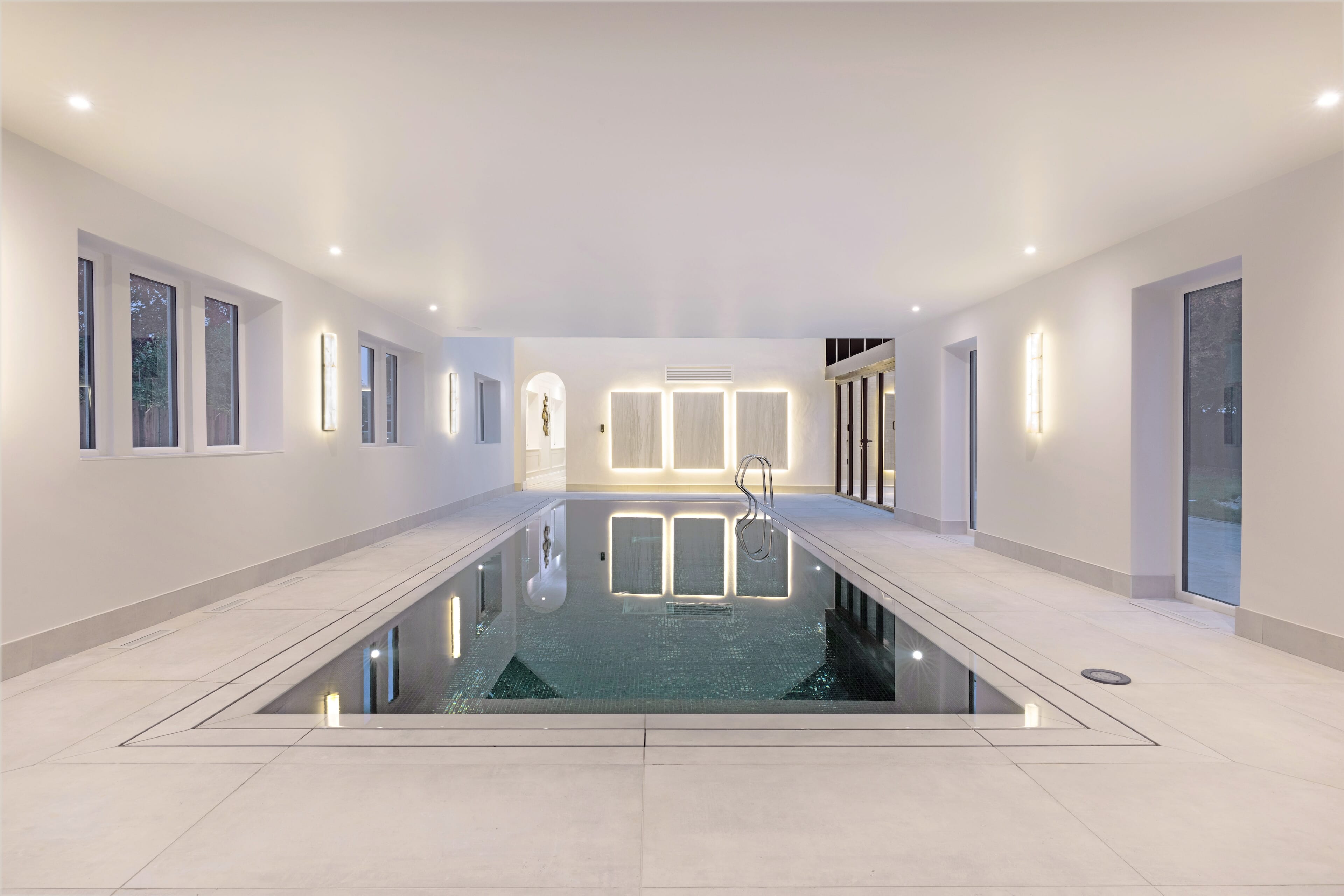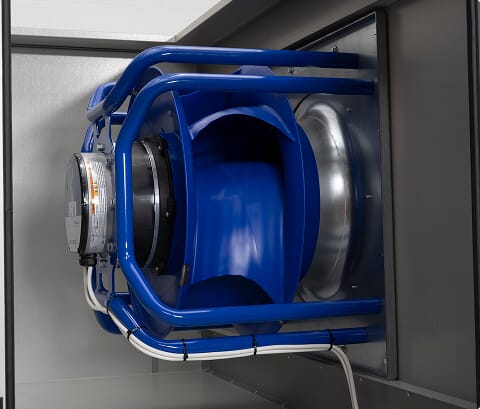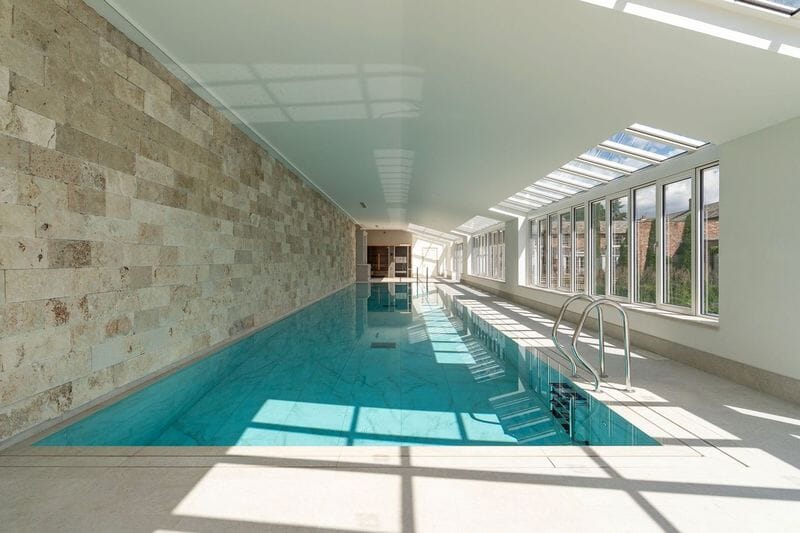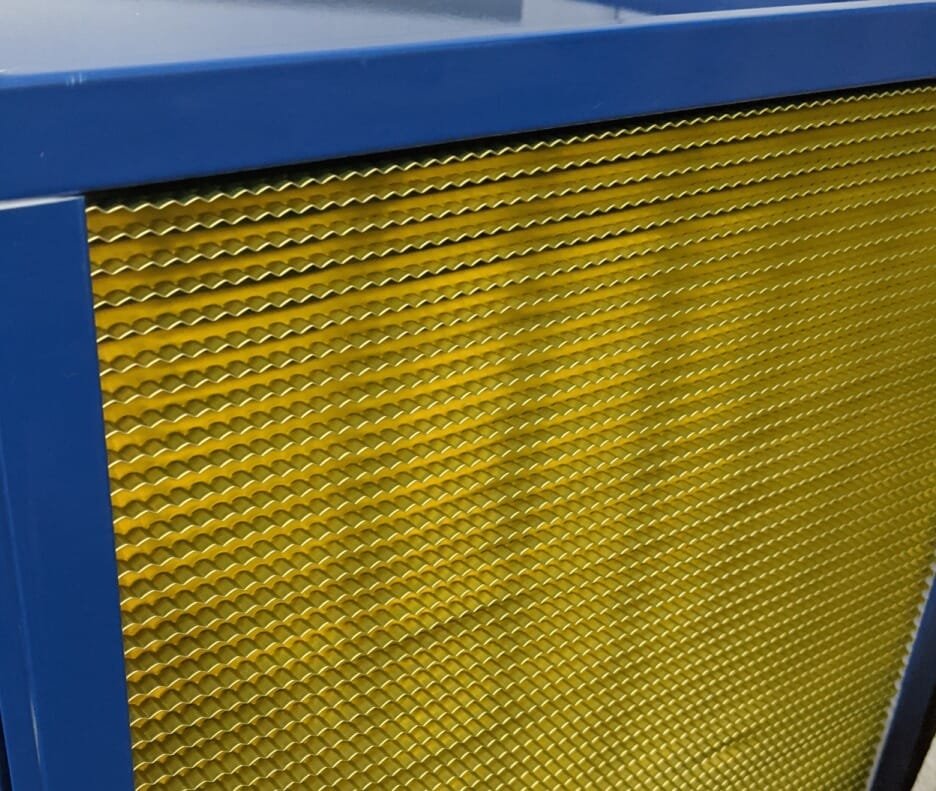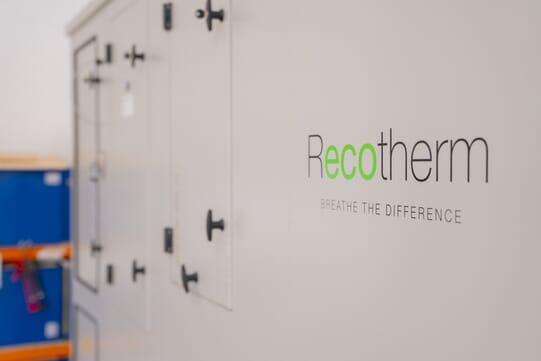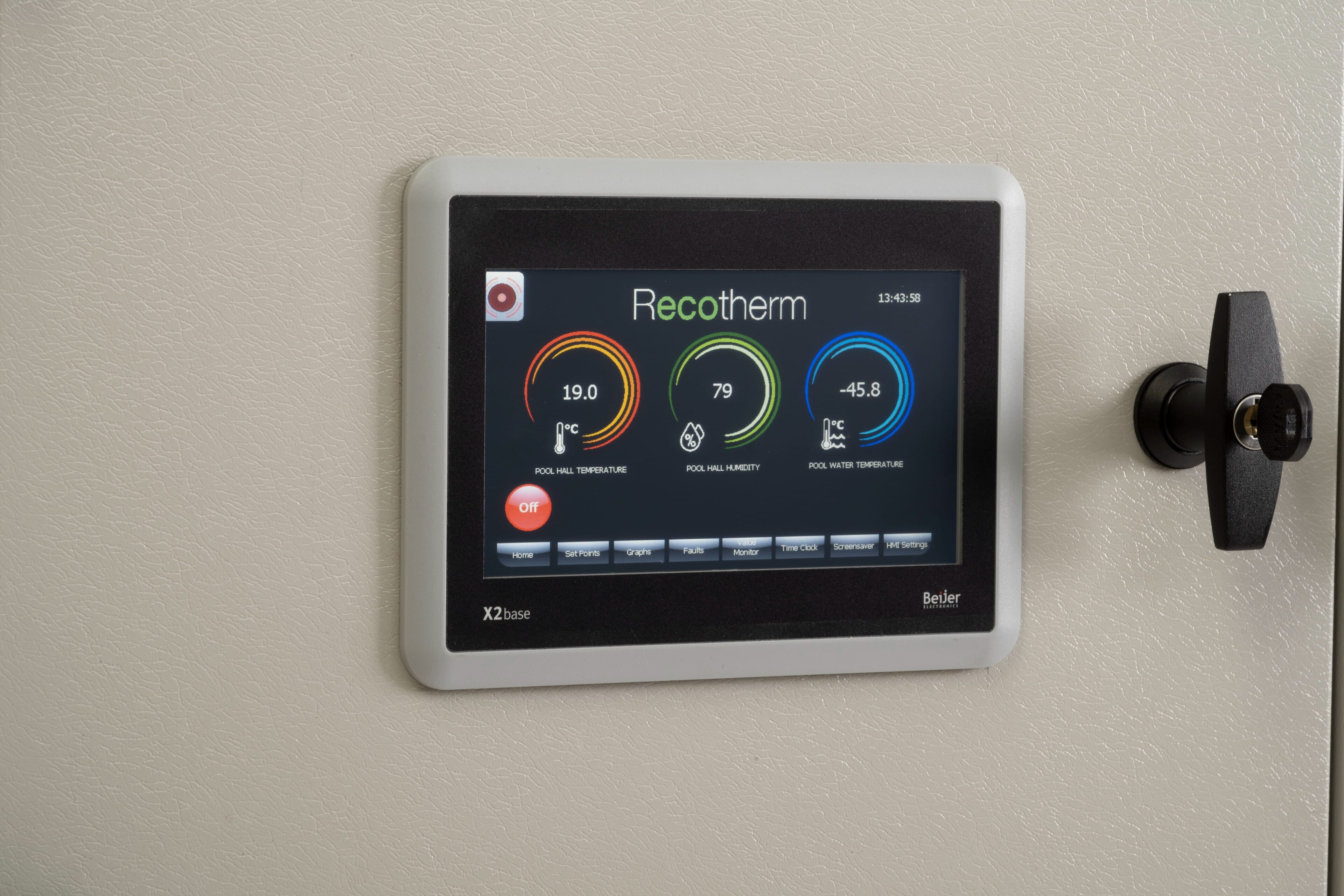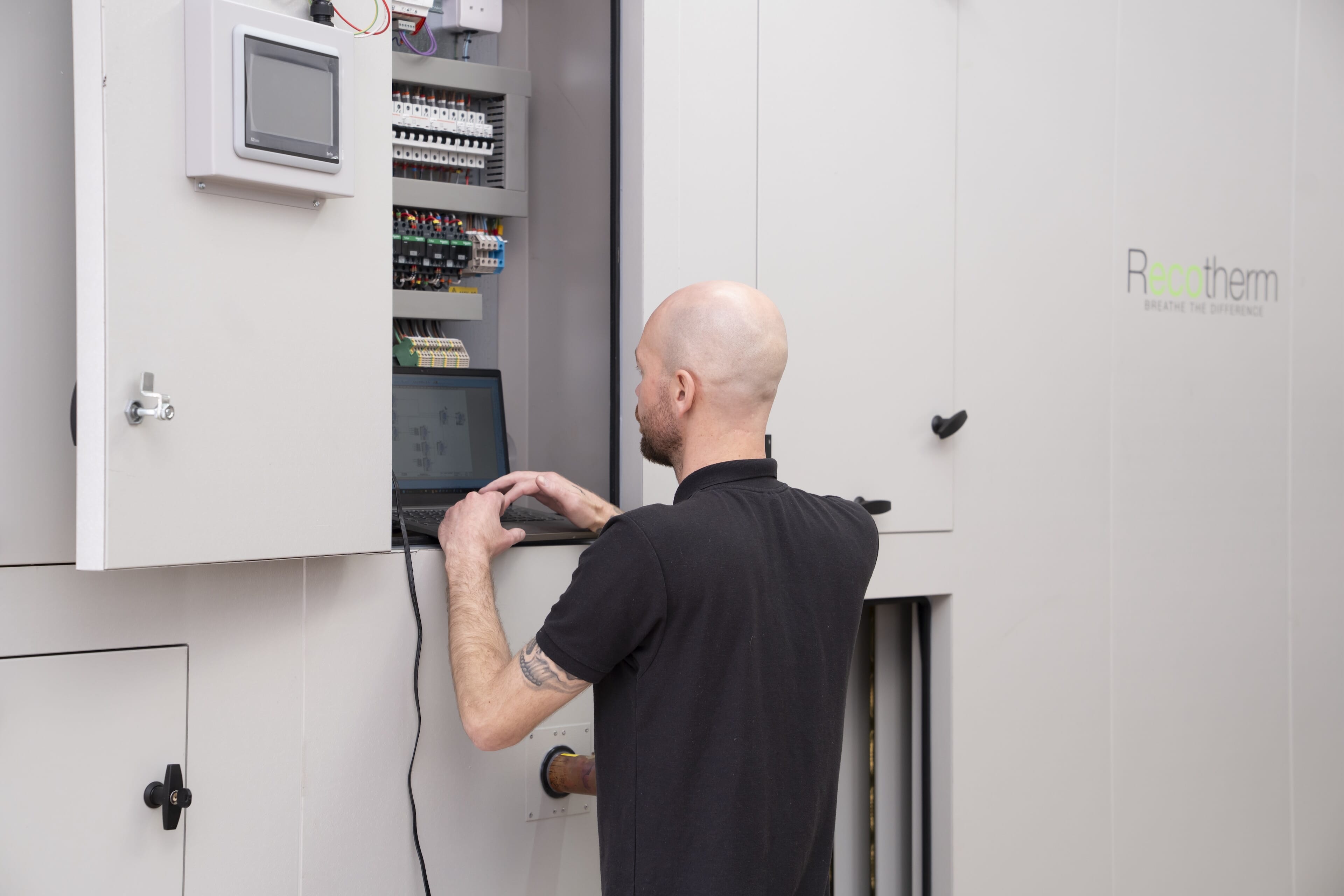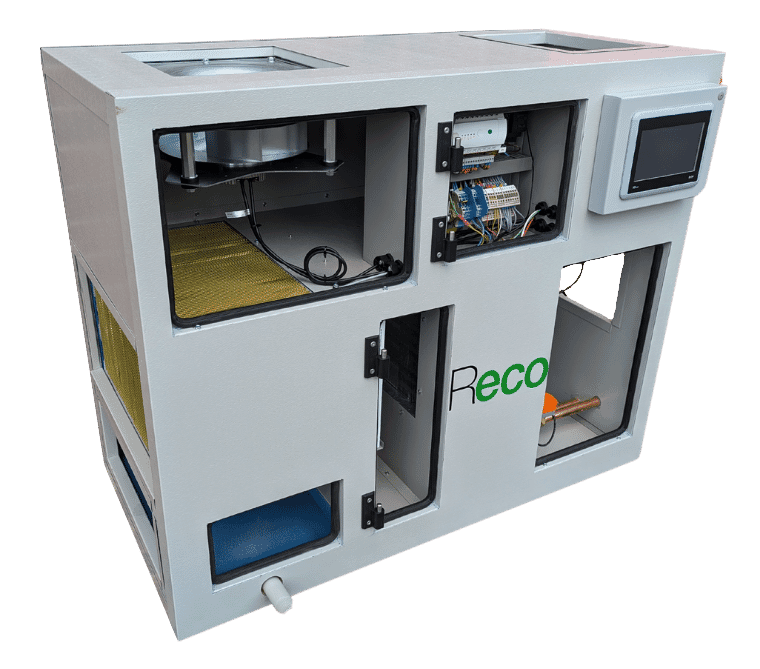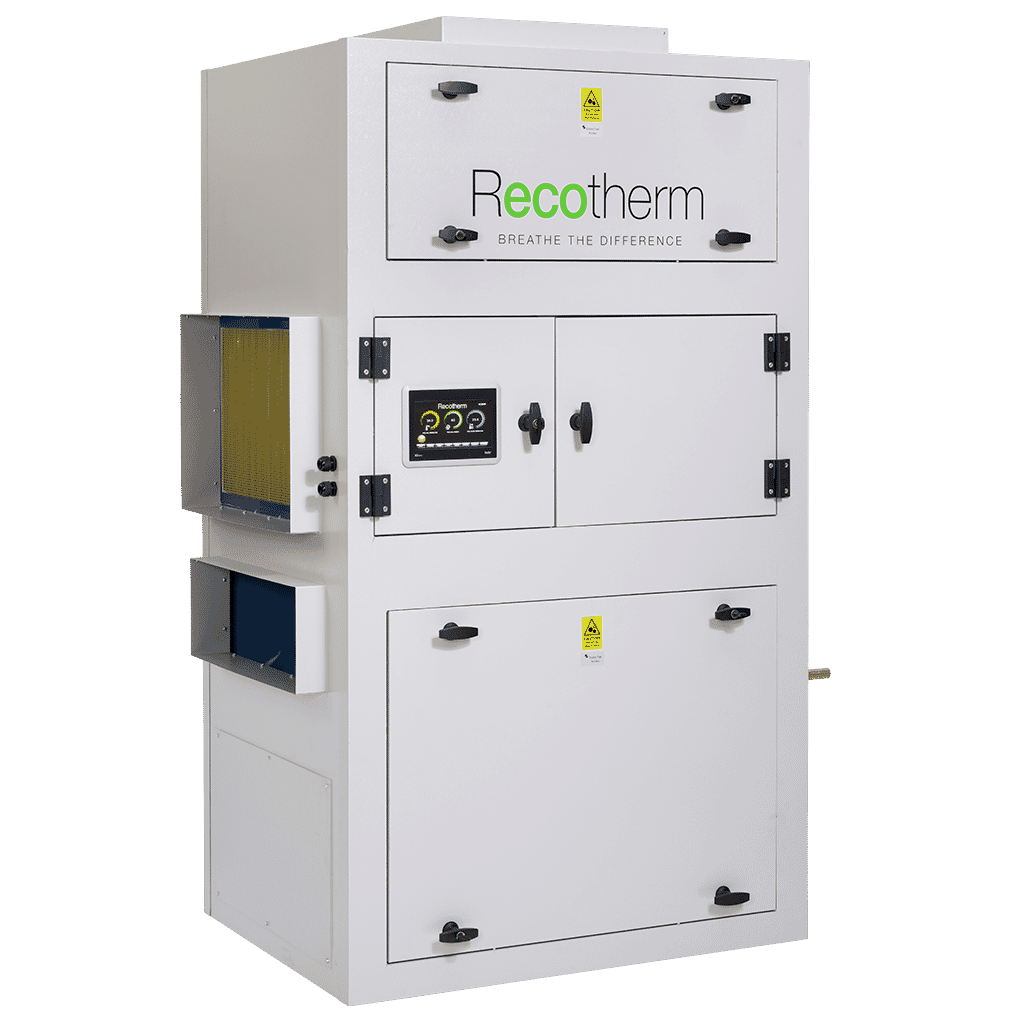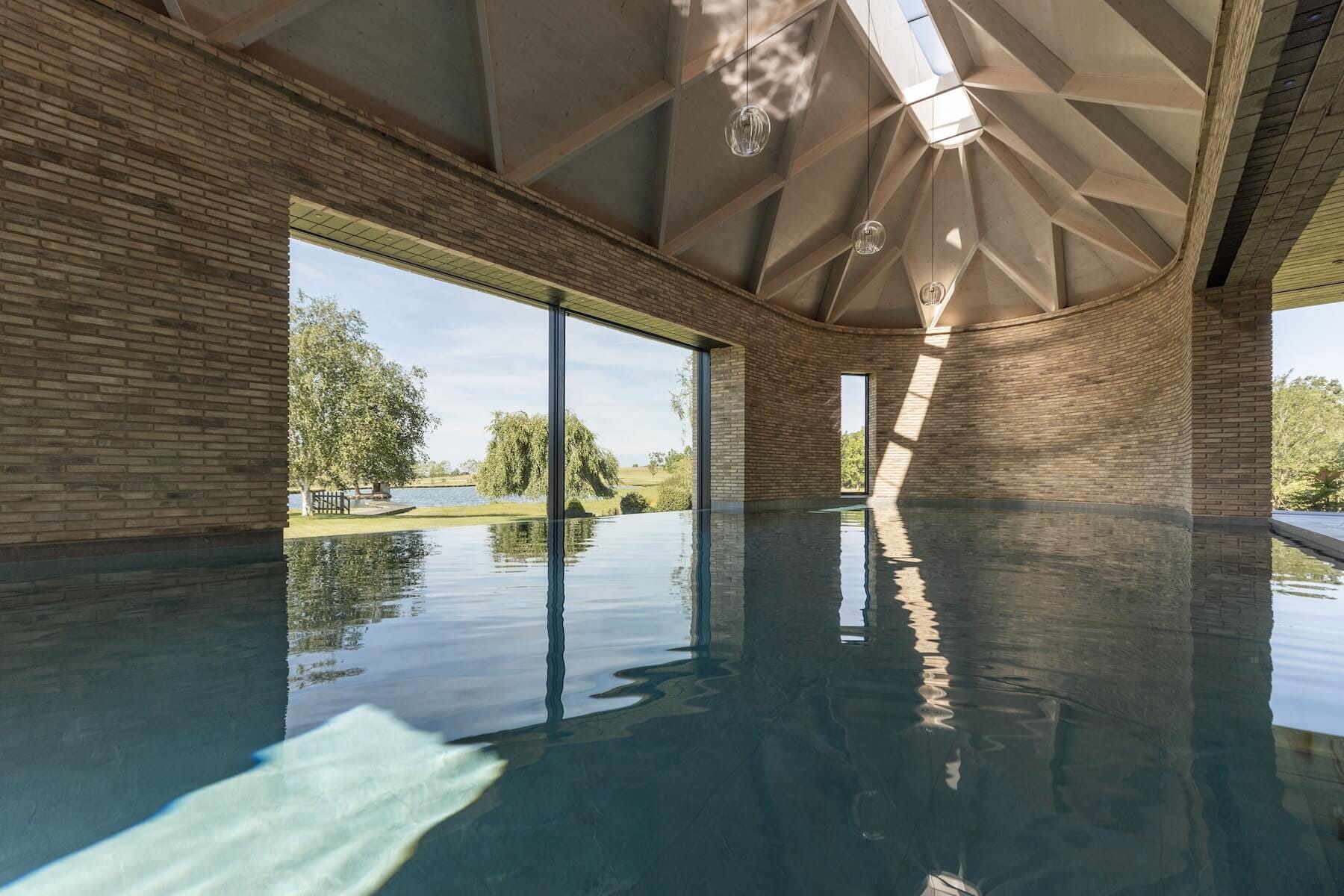Using fresh air technology, Recotherm’s swimming pool ventilation units make swimming at home feel like a breath of fresh air.
The innovative indoor pool ventilation system removes chemical byproducts from the air, minimising any nasty odours and creating a comfortable, healthy swimming environment.
Recotherm’s intelligent indoor pool air handling units adjust dynamically to use only the energy required and have a pool cover setting for extra efficiency and cost saving.
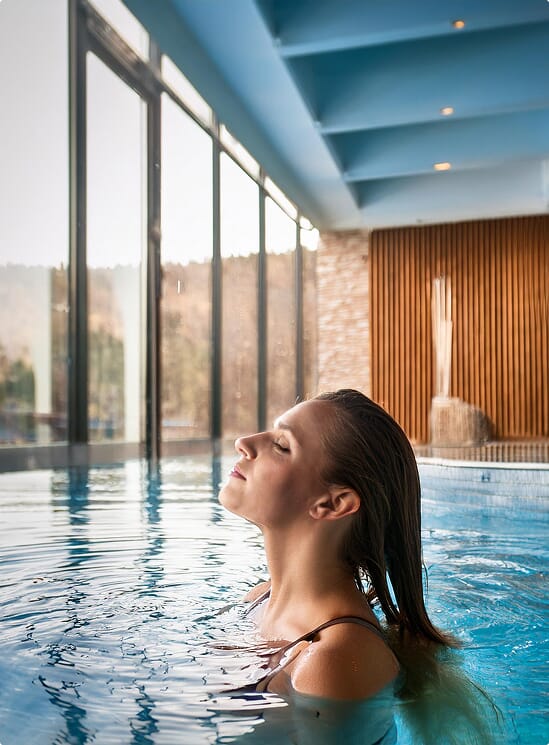










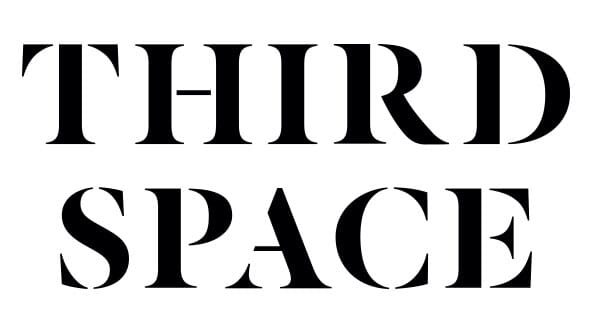



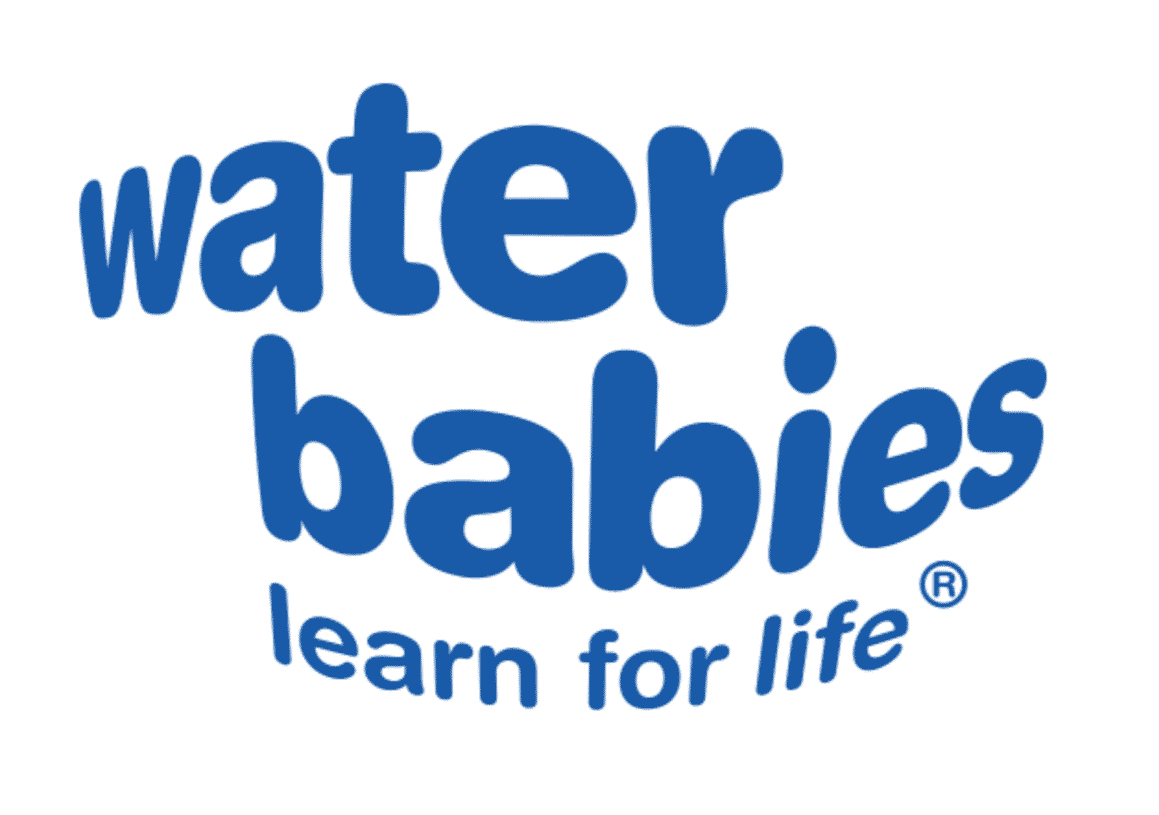















FAQs for Residential Pool Owners
A ventilation system is essential for managing humidity and maintaining air quality in an indoor pool environment. Water naturally evaporates from the pool surface, increasing humidity levels, which, if left unchecked, can lead to condensation, mould growth, and structural damage. A well-designed swimming pool air handling unit controls humidity, prevents moisture-related damage, and ensures a comfortable environment for pool users.
Recotherm swimming pool ventilation systems incorporate energy-efficient features like heat recovery technology to reduce operational costs. These indoor pool ventilation systems also improve air quality by removing chloramines and other airborne contaminants, ensuring a fresh and healthy atmosphere in the pool hall.
Opening a window does not provide effective swimming pool dehumidification. Indoor pools generate high levels of moisture, and relying on open windows leads to inconsistent airflow, potential condensation, and increased heating costs. Cold outdoor air can cause temperature imbalances, making the environment uncomfortable and expensive to heat.
A purpose-built swimming pool air handling unit is designed to regulate humidity, temperature, and air quality efficiently. Unlike an open window, a swimming pool ventilation system removes excess moisture, prevents structural damage, and improves indoor air quality by eliminating chlorine by products.
An extractor fan alone is not sufficient for indoor pool dehumidifiers. While it removes air from the pool hall, it does not regulate humidity or introduce properly conditioned fresh air. Extractor fans can also lead to increased heating costs as they pull in cold outdoor air that must be reheated.
A swimming pool air handling unit provides a comprehensive solution by managing swimming pool dehumidification, ensuring proper air circulation, and utilising heat recovery to improve energy efficiency. Investing in a dehumidifier for swimming pools ensures long-term protection for the building and a comfortable environment for users.
Basic fans and heaters do not provide adequate swimming pool dehumidification and are not designed to withstand the corrosive effects of a swimming pool environment. Recotherm’s swimming pool air handling units feature advanced heat recovery technology, reducing energy consumption and operational costs.
Recotherm units are engineered for durability, with some systems still in operation after 30 years. A properly designed indoor pool ventilation system prevents condensation, protects the building, and maintains superior air quality, making it a cost-effective long-term investment.
Yes, the display panel can be positioned away from the swimming pool air handling unit as long as it is sitting on the same network as the controller, ensuring easy access for monitoring and adjustments. This feature provides flexibility in system management, allowing controls to be installed in a convenient location.
Yes, fitting a pool cover on a residential pool is highly advisable. It’s an excellent investment as it reduces the workload of the AHU and therefore energy costs.
Yes, when a pool cover is deployed, evaporation decreases significantly. Recotherm’s swimming pool air handling units can be programmed to adjust air temperature automatically, improving energy efficiency.
Yes, spa pools generate more evaporation due to their higher water temperature and increased activity. A swimming pool air handling unit designed for spa environments ensures effective swimming pool dehumidification, preventing excess moisture buildup and maintaining optimal air quality.
Yes, continuous operation is necessary to maintain effective indoor pool ventilation and prevent condensation-related damage. However, Recotherm units adjust their speed based on demand, reducing energy consumption during low-usage periods.
A heat pump dehumidifier operates by recirculating the air within the space, removing moisture through a direct expansion evaporator. The heat generated during this process is then used to warm the air and, in some cases, the pool water.
While this approach can reduce humidity, it has significant drawbacks. First, the dehumidification process relies heavily on electricity, which is expensive to operate. This can lead to higher energy costs, especially in comparison to systems that incorporate advanced energy-saving technologies like heat recovery.
Secondly, because a heat pump dehumidifier primarily recirculates the air within the pool hall, it does not address the removal of contaminants such as chloramines (produced by the interaction of chlorine with organic materials) or unpleasant body odour smells. This can result in a poor-quality atmosphere that is less enjoyable for pool users and potentially damaging to the building structure over time.
Recotherm’s swimming pool ventilation systems prioritise fresh air intake, minimising chloramines and odours while optimising energy efficiency with heat recovery technology.

